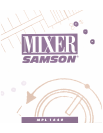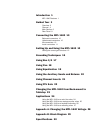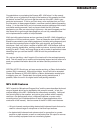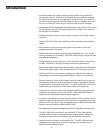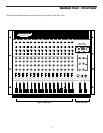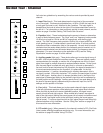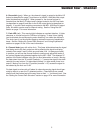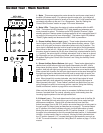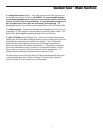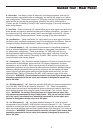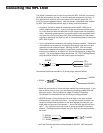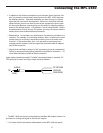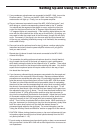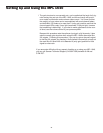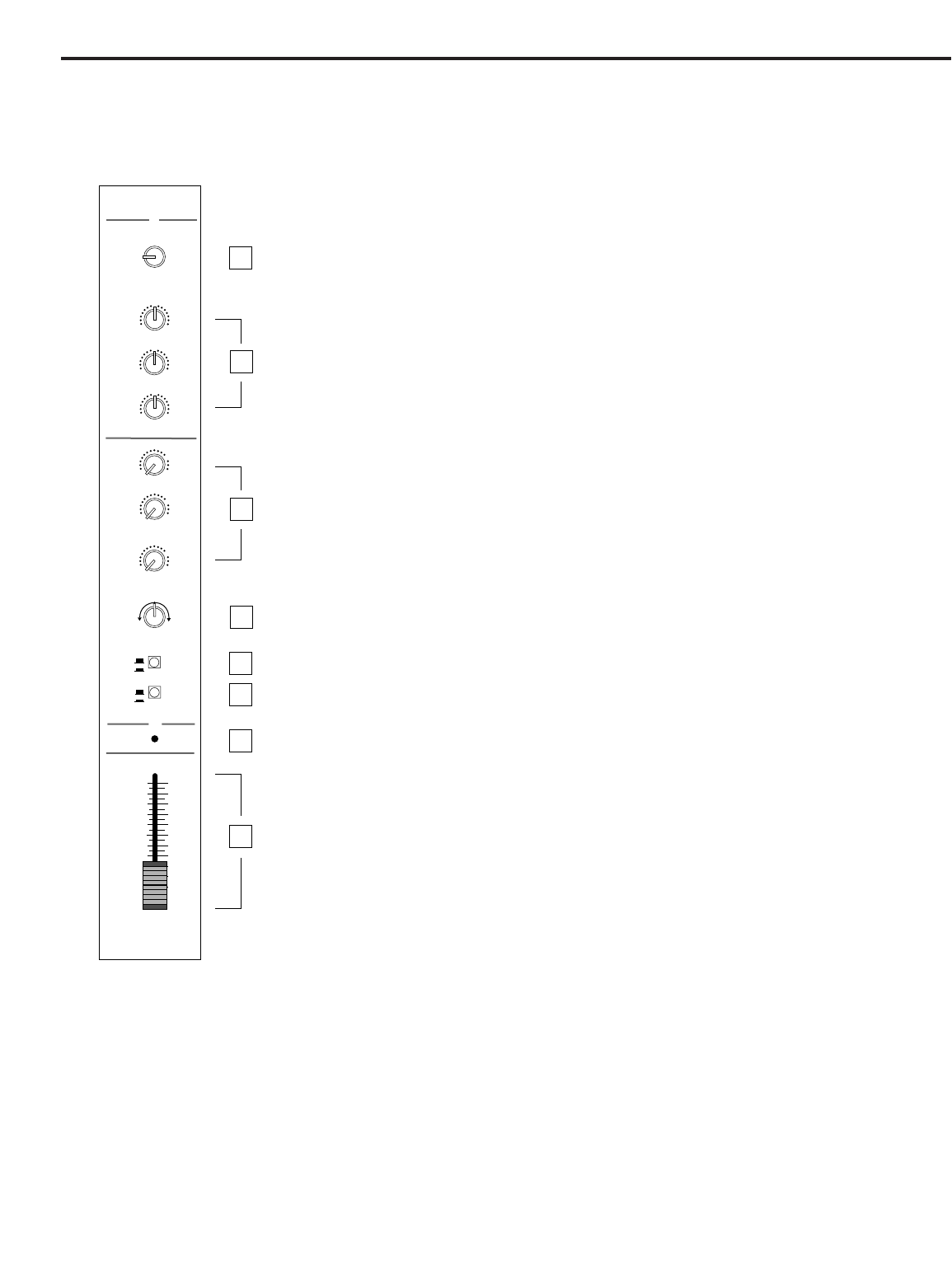
Guided Tour - Channel
Let’s start our guided tour by examining the various controls provided by each
channel:
1: Input Trim (black) - This knob determines the input level of the connected
mic or line signal. Continuously adjustable from +4 dB to -50 dB, the input trim is
at unity gain (no boost or cut) when set to the 0 position. The input signal is
boosted when the knob is turned to the right of 0 and attenuated when turned to
the left of 0. For information on how to properly set this for each channel, see the
section on page 12 entitled “Setting The Correct Gain Structure.”
2: Equalizer (blue) - These knobs determine the amount of boost or attenuation
in each of three frequency areas. The “High” and “Low” frequency knobs provide
15 dB of cut or boost at 10 kHz and 80 Hz, respectively, with shelving-type
control. The “Mid” frequency knob provides 12 dB of cut or boost at 800 Hz, with
a bell (peaking) curve. A center detent in each knob (at the 12 o’clock position)
indicates no boost or attenuation (that is, flat response). As each knob is turned
clockwise from the center detent position, the frequency area is boosted; as it is
turned counterclockwise from the center detent position, the frequency area is
attenuated. For more information on the application of EQ, see the “Using
Equalization” section on page 19 of this manual.
3: Auxiliary sends (light gray) - These knobs allow you to route signal to any of
the MPL 1640’s three monophonic auxiliary outputs. These are typically used to
create submixes (for example, a monitor mix or headphone cue mix) or to feed
signal from single or multiple channels to outboard effects devices. At the 0 posi-
tion, the send signal is routed with unity gain (that is, no boost or attenuation).
As each knob is turned clockwise from the 0 position, the signal is boosted; as it
is turned counterclockwise from the 0 position, it is attenuated. At the fully
counterclockwise “-∞” position, the send signal is infinitely attenuated—that is,
no signal is routed. At the fully clockwise “+10” position, the send signal is routed
with 10 dB of gain. Auxiliary send 1 is always pre-fader; that is, the level of the
send signal is determined solely by the channel’s input trim and is unaffected by
its fader position and EQ settings. Auxiliary sends 2 and 3 are post-fader; that is,
the level of the send signal is determined by the channel’s input trim, its EQ
settings, and the position of its fader.
4: Pan (white) - This knob allows you to place each channel’s signal anywhere
in the left-right stereo spectrum, while keeping the overall signal level constant.
When the knob is placed at its center (detented) position, the signal is sent
equally to both left and right outputs. When moved left of center, less signal is
sent to the right output (making the sound appear left of center) and when moved
right of center, less signal is sent to the left output (making the sound appear
right of center). To route a signal hard left or right, place the pan knob either fully
counterclockwise or fully clockwise. See the “Using Pan” section on page 18 of
this manual for more information.
5: PFL switch (gray) - When pressed in, the channel is soloed in PFL (Pre-Fade
Listen) mode, affecting headphone monitoring only. For more information, see
the section on page 22 entitled “Using PFL Solo.”
4
+4
-50
INPUT TRIM
0
-10
-15
+15
HIGH
0
-12
+12
MID
0
-15
+15
LOW
0
+10
AUX 1
0
−∞
+10
AUX 2
0
−∞
+10
AUX 3
0
−∞
PFL
BUS
ON
OFF
3 / 4
L / R
1
-∞
dB
PEAK
+15
0
R
PAN
L
1
MUTE
1
2
3
4
5
6
7
8



